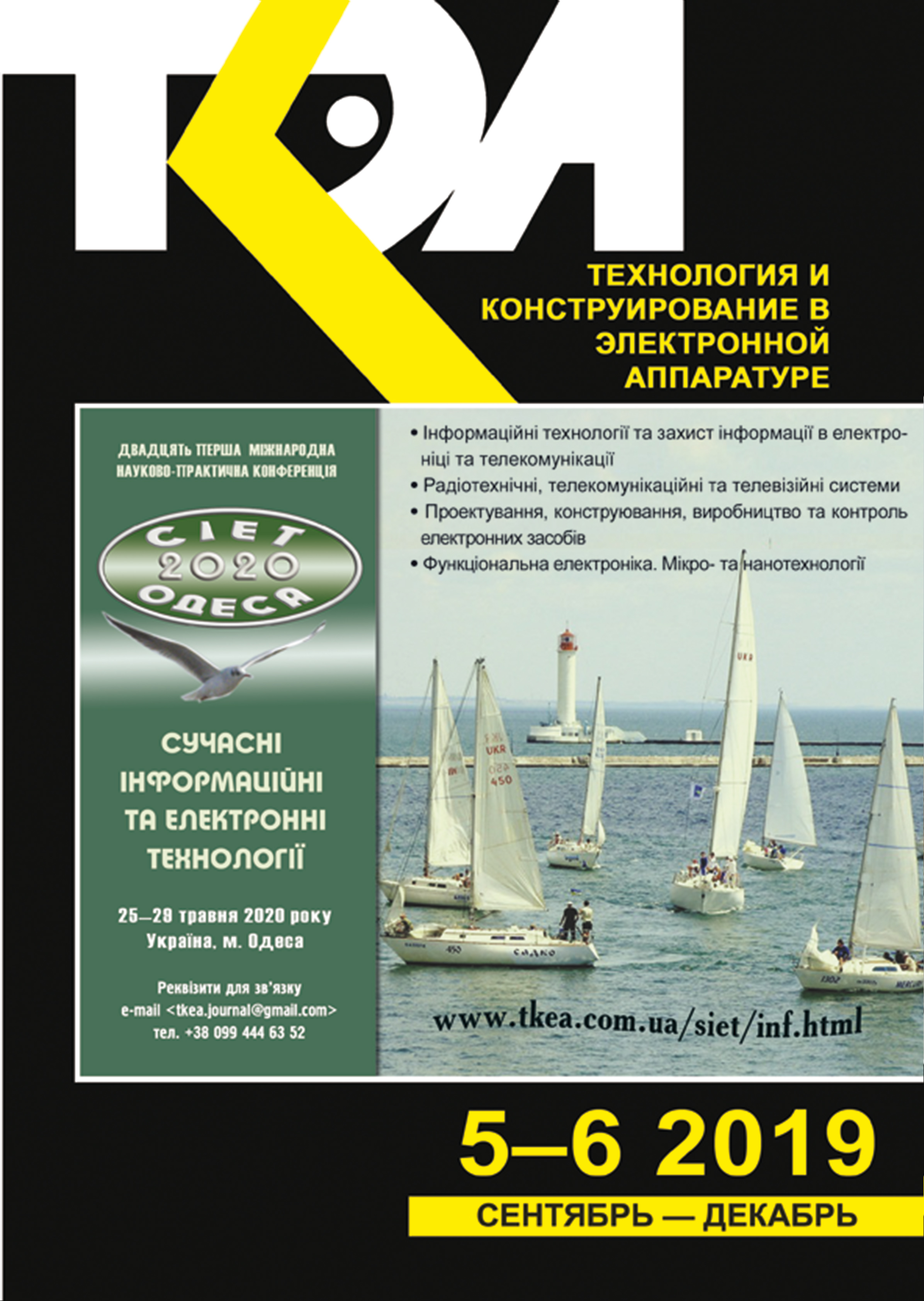New LED lamp design with heat pipes
Abstract
The problem of climate change poses a challenge for humanity: it is necessary to reduce harmful emissions into the atmosphere, caused mainly by the burning of coal in thermal power plants. Partially, this problem can be solved by the use of energy-saving devices and equipment, including the replacement of traditional light sources with more efficient LEDs. This, however, causes the problem of ensuring normal thermal modes of the LEDs, since the more powerfull the LED is, the more heat is released in their semiconductor crystals, which leads to an increase in the temperature of the crystals and a decrease in the reliability of the device. This problem becomes especially urgent when using powerful multi-chip LED light sources, the so-called SOB matrices, whose power even now exceeds 500 W.
This article presents a new design of a powerful LED lamp for indoor illumination of rooms with low ceilings. The heat from the LED is transferred via heat pipes to the heat exchanger rings looped around the light source. The heat exchanger rings are cooled by the natural convection of the surrounding air (at an ambient air temperature of 20°C). Computer simulation allowed evaluating the ability of the proposed cooling system to provide a normal thermal mode of the LED light source. The results on the computer simulations of the temperature field of light source's cooling system showed that when the LED power is 300 W, the temperature of the light source's base at the point where it is connected to the light source does not exceed 67.6°C. When the contact zone is covered with a 0.1 mm layer of heat-conducting paste (Arctic Silver 5 type) with a thermal conductivity coefficient of 8.7 W/(m·°C), the temperature of the LED case reaches 70°C. If the thermal resistance of the LED light source is 0.1°C/W, then the temperature of its semiconductor crystals will be 100°C, well below the allowable temperature value of 150°C. The total thermal resistance of the cooling system is 0.159°C/W.
References
Polishchuk A., Turkin A. [The degradation of the semiconductor LEDs based on gallium nitride and its solid solutions]. Komponenty i tekhnologii, 2008, no. 2, pp. 25-28. https://kit-e.ru/assets/files/pdf/2008_2_25.pdf (Rus)
Yurtseven M.B., Mete S., Onaygil S. The effects of temperature and driving current on the key parameters of commercially available, high-power, white LEDs. Lighting Res. Technol. 2015, vol. 48, iss. 8, pp. 943-965. https://doi.org/10.1177/1477153515576785
Melnichenko A. [Power LED protection against overheating]. Elektronnye komponenty i systemy, 2005, no. 12(100), pp. 22-23. (Rus).
Ursaki A. [Development of Chip-on-Board LED modules by the example of matrix evolution from Citizen Electronics]. Sovremennaja svetoteknika, 2018, no. 2, pp. 20-22. http://www.lightingmedia.ru/netcat_files/File/20(3).pdf (Rus)
Ying S. P., Shen W. B. Thermal analysis of high-power multichip COB light-emitting diodes with different chip sizes. IEEE Trans. Electron Devices, 2015, vol. 62, no. 3, pp. 896-901. https://doi.org/10.1109/TED.2015.2390255
Chornyi E.V. [Lighting device]. Pat. 107882 C2 Ukaina, 2015, bul. no 4. (Ukr)
Jing Wang, Xin-Jie Zhao, Yi-Xi Cai et al. Experimental study on the thermal management of high-power LED headlight cooling device integrated with thermoelectric cooler package. Energy Conversion and Management, 2015, vol. 101, pp. 532-540. http://dx.doi.org/10.1016/j.enconman.2015.05.040
Mika Maaspuro. Piezoelectric oscillating cantilever fan for thermal management of electronics and LEDs - A review. Microelectronics Reliability. 2016, vol. 63, pp. 342-353. https://doi.org/10.1016/j.microrel.2016.06.008
Xiong Deng, Zhenbing Luo, Zhixun Xia et al. Active-passive combined and closed-loop control for the thermal management of high-power LED based on a dual synthetic jet actuator. Energy Conversion and Management, 2017, vol. 132, pp. 207-212. http://dx.doi.org/10.1016/j.enconman.2016.11.034
Schneider M., Leyrer B., Herbold C., Maikowske S. High power density LED modules with silver sintering die attach on aluminum nitride substrates. 2014 IEEE 64th Electronic Components and Technology Conference (ECTC), pp. 203-208. https://doi.org/10.1109/ECTC.2014.6897289
Wu Y., Tang Y., Li Z. et al. Experimental investigation of a PCM-HP heat sink on its thermal performance and antithermal-shock capacity for high-power LEDs. Appl. Therm. Eng. 2016, vol. 108, pp. 192-203. https://doi.org/10.1016/j.applthermaleng.2016.07.127
Nikolaenko Yu.E., Kravets V.Yu., Naumova A.N. Baranyuk A.V. Development of the ways to increase the lighting energy efficiency of living space. International Journal of Energy for a Clean Environment, 2017, vol. 18, iss. 3, pp. 275-285. https://doi.org/10.1615/InterJEnerCleanEnv.2018021641
Nikolaenko Yu.E., Pekur D.V., Sorokin V.M. Light characteristics of high-power LED luminaire with a cooling system based on heat pipe. Semiconductor Physics, Quantum Electronics & Optoelectronics, 2019, vol. 22, no. 3, pp. 366-371. https://doi.org/10.15407/spqeo22.03.366
Lozovoi M.A., Nikolaenko Yu.E., Rassamakin B.M., Khairnasov C.M. [Research on thermal characteristics of heat pipes for LED lightning devises]. Tekhnologiya i Konstruirovanie v Elektronnoi Apparature, 2014, no. 5-6, pp. 32-38. https://doi.org/10.15222/TKEA2014.2.32 (Rus)
Trofimov V.E., Pavlov A.L., Mokrousova E.A. [CFD-simulation of radiator for air cooling of microprocessors in a limitided space]. Tekhnologiya i Konstruirovanie v Elektronnoi Apparature, 2016, no. 6, pp. 30-35. https://doi.org/10.15222/TKEA2016.6.30 (Rus)
Trofimov V.E., Pavlov A.L., Storozhuk A.S. [CFD-simulation of impact jet radiator for thermal testing of microprocessors]. Tekhnologiya i Konstruirovanie v Elektronnoi Apparature, 2018, no. 5-6, pp. 30-36. https://doi.org/10.15222/TKEA2018.5-6.30 (Rus)
Alyamovsky A.A., Sobachkin A.A., Odintsov E.V. et al. Komp'yuternoye modelirovaniye v inzhenernoy praktike [SolidWorks 2007/2008. Computer modeling in engineering practice]. St. Petersburg, BHV-Petersburg, 2008.
Alamovsky A.A. SolidWorks Simulation. Kak reshat' prakticheskiye zadachi [SolidWorks Simulation. How to solve practical problems]. St. Petersburg, BHV-Petersburg, 2012.
Copyright (c) 2019 Pekur D. V., Nikolaenko Yu. E., Sorokin V. M.

This work is licensed under a Creative Commons Attribution 4.0 International License.

